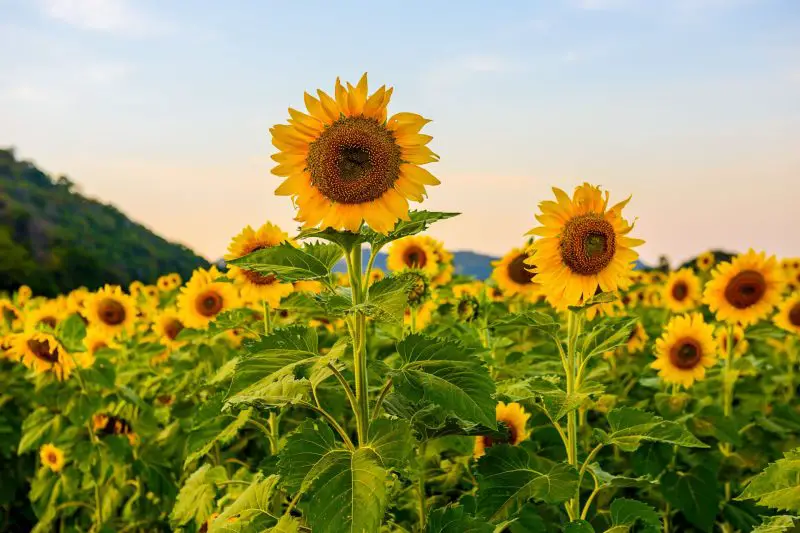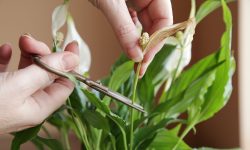Sunflowers are among the most iconic blooms in the world, known for their towering stalks and golden, radiant petals. While their appearance is striking, their bloom period is often a subject of curiosity for gardeners and flower enthusiasts alike. Knowing when sunflowers bloom and understanding how to extend their beauty can significantly enhance your gardening experience or flower arrangements.
In this comprehensive guide, we’ll explore the seasonal bloom time of sunflowers, how climate and location affect their flowering phase, and the best practices to make sunflowers last longer, both in the garden and in a vase. Whether you are planting sunflowers for the first time or looking to enjoy them for a more extended period, this article provides the insights you need.
Understanding the Bloom Cycle of Sunflowers

The Life Cycle From Seed to Bloom
Sunflowers, scientifically known as Helianthus annuus, follow a well-defined growth cycle that typically spans 70 to 100 days. The bloom stage is the pinnacle of this cycle, where the plant showcases its large, sun-facing flower head. This stage does not occur randomly—it’s the result of consistent growth and the right environmental cues.
After planting, sunflower seeds germinate within 7 to 10 days under ideal conditions. The seedlings quickly develop into sturdy plants, and the flower bud begins to form around the third or fourth week. From there, it usually takes an additional 30 to 50 days before the bloom fully opens, depending on the sunflower variety and growing conditions.
Peak Bloom Months Based on Growing Zones
Sunflowers are annuals that bloom primarily in the summer, but the exact bloom period varies depending on your USDA hardiness zone. In warmer zones like 8 through 10, sunflowers may bloom as early as late May or early June. Cooler zones, such as zones 3 through 6, tend to see sunflowers bloom between July and August.
The bloom period can last from two to four weeks, although ornamental varieties sometimes have shorter windows. If you plant sunflowers successively every 7 to 10 days over the span of several weeks, you can achieve a continuous bloom effect from early summer to early fall.
How Day Length and Sunlight Influence Blooming
Sunflowers are phototropic plants, meaning they respond to the direction of light. During their vegetative stage, they track the sun’s movement—a behavior known as heliotropism. However, once they bloom, the flower head settles facing east to protect seeds and attract pollinators.
Their blooming is heavily influenced by the amount of sunlight received. Sunflowers require a minimum of six hours of direct sunlight per day, though they perform best with eight or more. Shorter days or shaded conditions may delay blooming or result in smaller flowers.
Environmental Factors Affecting Bloom Time
The Role of Temperature and Climate
Temperature is a significant factor in determining when sunflowers bloom. These plants thrive in daytime temperatures between 70°F and 78°F. If temperatures are too low during the germination or early growth stages, development may stall, delaying the bloom.
In hot climates, sunflowers may bloom slightly earlier but complete their life cycle more quickly, leading to a shorter bloom period. In contrast, temperate climates offer a more extended flowering window as the plants grow and mature at a steadier pace.
How Soil Quality and Watering Impact Flowering
Well-draining, nutrient-rich soil supports robust sunflower growth. Poor soil conditions can slow development, which in turn delays blooming. Adding compost or organic matter at the time of planting helps provide the nutrients necessary for timely and vibrant blooming.
Sunflowers are relatively drought-tolerant, but they do best with regular watering, especially during the bud formation and bloom phases. Overwatering, however, can lead to root rot or fungal diseases, which adversely affect the plant’s ability to flower.
Pest and Disease Influence on Bloom Quality
Certain pests such as aphids, sunflower beetles, and caterpillars can damage buds and delay blooming. Diseases like downy mildew, rust, and fungal infections may also impact the plant’s ability to bloom fully or at all.
Early detection and integrated pest management are essential to ensuring that your sunflowers reach their bloom phase healthy and on schedule. Neem oil sprays, crop rotation, and maintaining adequate spacing between plants can help mitigate many of these issues.
How to Extend the Bloom of Garden Sunflowers
Choosing the Right Varieties for Longer Blooms
Not all sunflower varieties are created equal in terms of blooming duration. Some dwarf varieties such as ‘Sunspot’ and ‘Teddy Bear’ are bred for compact size and quick blooming, often lasting shorter periods. In contrast, branching varieties like ‘Autumn Beauty’ or ‘Italian White’ can produce multiple blooms over several weeks.
By selecting a mix of single-stem and branching sunflowers, you can stagger blooming across a longer window. This strategy works particularly well in ornamental gardens where continuous color and structure are desired throughout the growing season.
Deadheading and Pruning to Encourage New Blooms
Although many sunflowers are single-blooming, certain multi-headed varieties benefit from deadheading—the process of removing faded flowers. This encourages the plant to direct energy toward developing new flower buds rather than seed production.
Deadheading should be done carefully using clean, sharp pruners to avoid injuring the plant. Cut the faded bloom just above the next healthy leaf set or lateral bud. For branching varieties, this can result in several more weeks of bloom.
Support Structures to Prevent Bloom Damage
Sunflowers, especially tall cultivars, are susceptible to wind damage that can prematurely end blooming. Supporting the stalks with stakes or trellises can prevent tipping or snapping, especially during storms or high winds.
This is particularly useful during the peak bloom period when the weight of the large flower head makes the plant more top-heavy. A simple wooden stake tied with soft garden twine can keep your sunflowers upright and blooming longer.
Preserving Cut Sunflowers for Vase Arrangements
Best Time of Day to Cut Sunflowers
If you’re growing sunflowers for floral arrangements, timing your cut is crucial. The best time to cut sunflowers is early in the morning when the stems are well-hydrated and turgid. Midday heat can cause wilting, and late-day harvesting may leave the flowers less vibrant.
Choose blooms that are just beginning to open, with the outer petals unfurling but the inner disk still tight. These sunflowers will continue to open slowly in the vase, offering a longer display life.
Techniques for Cutting and Conditioning
Use sharp, clean floral shears to cut sunflower stems at a diagonal angle. Immediately place the cut stems in a bucket of lukewarm water to prevent air embolisms that can shorten vase life. Let the stems rest in a cool, dark place for a few hours before arranging them.
Removing lower leaves from the stem ensures no foliage decays in the water, which helps maintain water cleanliness and extends the freshness of the flowers. Changing the water daily and recutting the stems every two to three days also helps prolong bloom.
Tips for Extending Vase Life
To make cut sunflowers last longer indoors, keep the vase out of direct sunlight and away from heat sources. Use flower preservatives if available, or add a homemade mix of sugar and vinegar to the water to nourish the blooms and inhibit bacterial growth.
Sunflowers typically last 7 to 10 days in a vase, though some varieties may hold up longer with proper care. Always remove wilting flowers promptly to keep the rest of the bouquet fresh and visually appealing.
Maximizing Bloom Time Through Successive Planting
Planting in Intervals for Continuous Blooms
Successive planting is an effective technique that involves sowing sunflower seeds at staggered intervals, usually every 7 to 10 days. This method creates overlapping growth stages, resulting in continuous blooming throughout summer and early fall.
By carefully planning and mapping out your planting schedule, you can enjoy a rolling bloom that brightens your garden or provides a steady supply of cut flowers over several months. It’s an especially useful approach for market growers or anyone looking to maintain floral displays over a season.
Understanding Days to Maturity for Different Cultivars
Different sunflower cultivars have varying days-to-maturity, ranging from 60 days for fast-blooming dwarf varieties to 100 days for large, showy cultivars. Knowing the maturity time for each type helps you sequence your planting to ensure a steady succession of blooms.
Pairing early-blooming varieties like ‘Sunrich Orange’ with mid- and late-season bloomers such as ‘Mammoth Grey Stripe’ can help you cover a full range of seasonal color, from early June into October in milder climates.
Seasonal Limitations and Final Planting Dates
Because sunflowers are frost-sensitive, the last safe planting date usually falls 70 to 90 days before your region’s first expected fall frost. In most regions, this means final planting should occur by mid to late July to ensure blooming before cold weather sets in.
Keeping track of regional frost dates and adjusting your sowing schedule accordingly allows you to maximize your bloom season without the risk of early frost damaging the flowers before they fully mature.
FAQ About When Do Sunflowers Bloom
When is the typical blooming season for sunflowers?
Sunflowers usually bloom during the summer, with peak blooming occurring between June and August in most regions. The exact timing depends on the planting date, sunflower variety, and local climate conditions. In warmer areas, blooming can start as early as late May, while in cooler regions it may extend into September.
How long do sunflowers take to bloom after planting?
Most sunflower varieties take between 70 to 100 days from seed to full bloom. Dwarf or early-blooming types may flower in as little as 60 days, while larger cultivars need more time. The timing can also vary slightly based on soil quality, sunlight, temperature, and watering.
Do sunflowers bloom all summer long?
Individual sunflower plants typically bloom for two to four weeks, but you can extend the overall blooming season by planting in intervals every 7–10 days. Branching varieties also produce multiple flowers over time, helping prolong the presence of blooms in your garden.
What time of year should I plant sunflowers to get summer blooms?
To get summer blooms, you should plant sunflower seeds in late spring, once the soil temperature reaches at least 50°F (10°C) and the risk of frost has passed. In most zones, this is between April and June. Earlier planting leads to earlier blooms.
Can sunflowers bloom in the fall?
Yes, sunflowers can bloom into the early fall if you plant them in mid to late summer. However, ensure you plant at least 70–90 days before your region’s first expected frost date to allow enough time for blooming before cold weather arrives.
Do all sunflower varieties bloom at the same time?
No, sunflower varieties bloom at different times depending on their growth rate and type. Fast-maturing dwarf varieties bloom earlier, while larger or ornamental types take longer. Knowing the maturity days of each cultivar helps you plan a staggered blooming schedule.
How can I make sunflowers bloom earlier?
To encourage earlier blooming, start seeds indoors a few weeks before the last frost, or plant early-maturing varieties. Make sure they get full sun and maintain ideal growing conditions, including well-drained soil and consistent moisture during early growth stages.
Why are my sunflowers not blooming?
Sunflowers may fail to bloom due to lack of sunlight, poor soil, overcrowding, or pest infestations. Ensuring they receive at least six hours of direct sun per day and proper nutrients can promote healthy blooms. Check for signs of disease or insect damage as well.
Do sunflowers only bloom once?
Single-stem sunflower varieties typically bloom only once, producing one large flower. However, branching types can generate multiple blooms on side stems over several weeks, offering an extended display if properly cared for and deadheaded regularly.
What’s the best way to enjoy sunflowers for the longest period?
To enjoy sunflowers over a long period, use succession planting every couple of weeks throughout spring and early summer. Also, combine different varieties with varied blooming times. For cut flowers, harvest at the right stage and follow care steps to keep them fresh in vases.
Final Thoughts on Sunflower Blooming and Longevity
Sunflowers offer a burst of color and a sense of joy that few flowers can match. Understanding their bloom time and the various factors that affect it helps you make the most of each plant’s potential. From seed selection and care practices in the garden to proper harvesting and vase maintenance, there are many ways to enjoy longer-lasting sunflower blooms.
Whether you’re a gardener seeking a continuous summer display or a flower lover hoping to keep your arrangements vibrant for days, the techniques discussed in this article will help you cultivate and preserve these golden treasures. With a little planning and care, you can extend the beauty of sunflowers far beyond their natural bloom.






